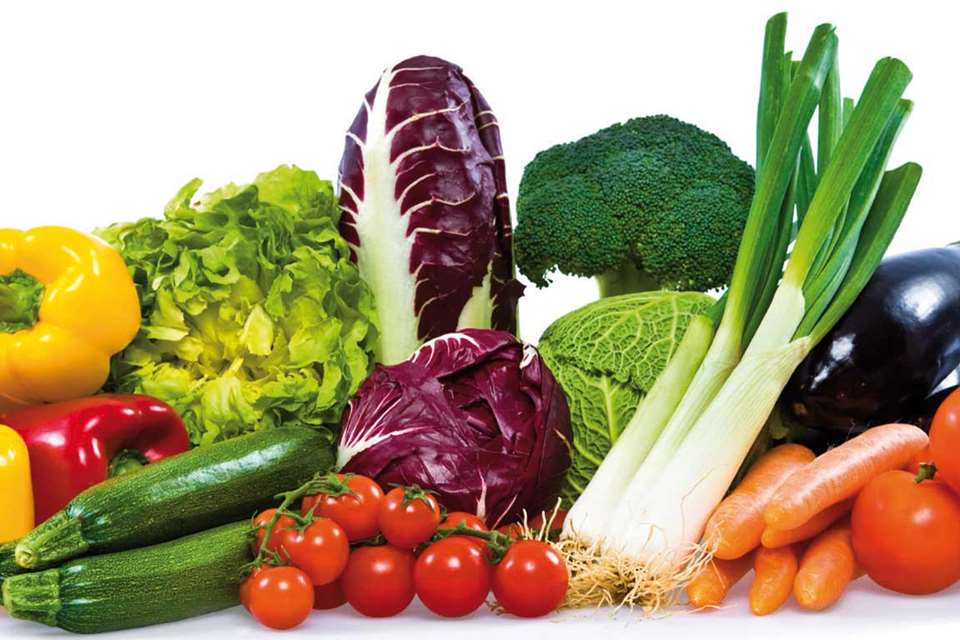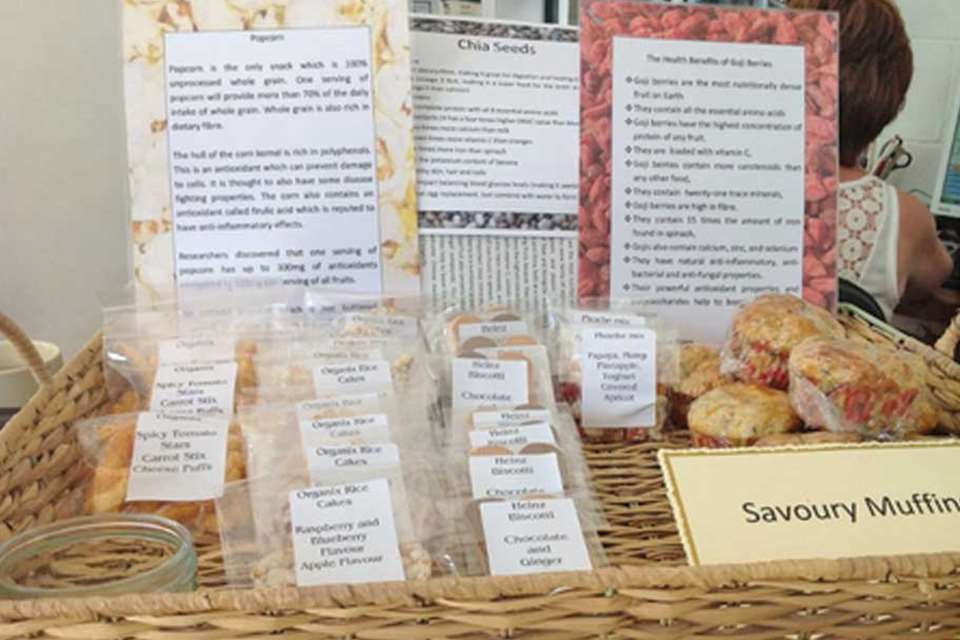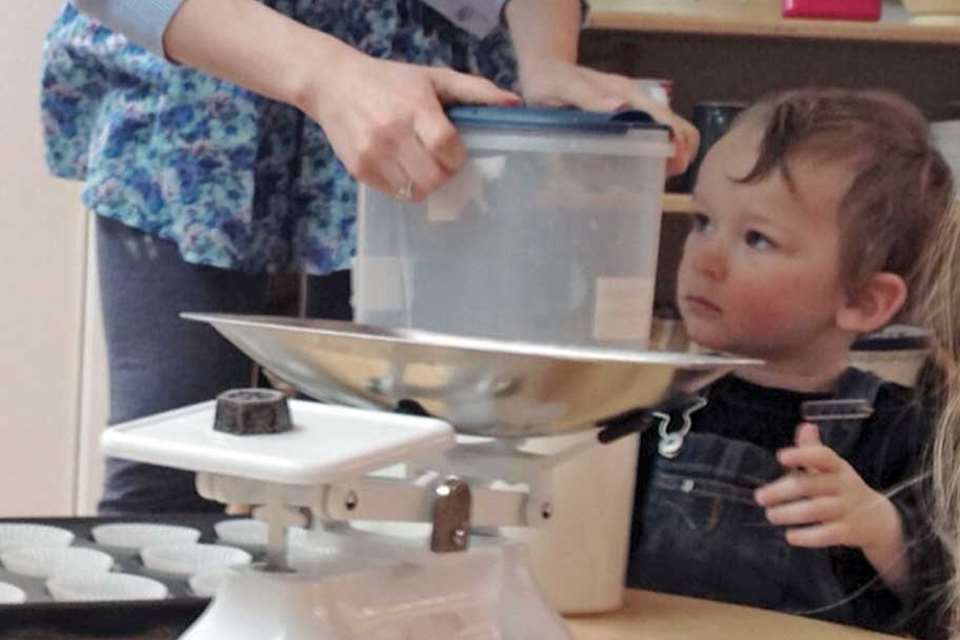A Unique Child: Nutrition - Sixes and sevens?
June Graham
Monday, May 5, 2014
Is it time to consider seven portions and six colours when planning children's intake of fruit and vegetables? By June Graham

Until very recently, the Government has urged us all to eat our 'five a day' portions of fruit and vegetables. But scientists are now saying that eating seven portions a day may be a more desirable target (see box).
Indeed, we have always been behind many other countries in the recommended amount. In Denmark, the goal is six a day. In Japan, it is suggested that they tackle 13 portions of vegetables in their day, though their portion sizes are smaller than ours; in Britain, an adult portion size is 80g, while in Japan it is only 50g. In Australia, the recommendation is '2 + 5', which is two portions of fruit and five of vegetables.
An adult portion, as already mentioned, is around 80g, but you have to adapt that for children. For younger children, a portion is between a quarter and half a cup, whereas for slightly older children it is between a half and one cup. Another way of reckoning is what can be held in the child's fist.
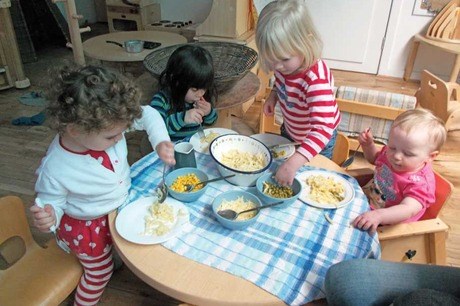
COLOURS
As well as eating the recommended amount of portions, it is also very important to eat as many different colours of fruit and vegetables as possible each day.
There are six colours to consider: red, yellow, orange, green, white and purple. It is the natural chemicals in the fruit and vegetables, called phytonutrients, that give the fruits and vegetables their colour, and these phytonutrients all have different properties and health benefits.
For example, it is the carotenoids in various concentrations in fruit and vegetables that give them their yellow, orange and red colouring.
Carotenoids act as an antioxidant and tackle damage caused by free radicals - the atoms and molecules known to cause cell damage. They are also very helpful for our immune systems and eye health. Some of the carotenoids are converted to Vitamin A in our bodies.
There are more than 25,000 different phytochemicals found in fruit and vegetables, and they all play a part in keeping us healthy.
Although you may be able to take supplements to make up for the vitamins and minerals fruit and vegetables contain, it would be impossible to make up for many of these phytonutrients.
WHAT'S FOR LUNCH?
In our setting, Cowgate Under 5's Centre, the meals come from a central kitchen Monday to Friday, but we prepare our own lunches on a Friday. The staff take it in turns to work with the children - planning, shopping for, and preparing the meal. I always like to ensure that I have used all six colours when it is my turn.
Pasta always goes down well with our children and is very versatile. I used to make different kinds of sauces and put vegetables through it until I noticed how much the children like plain or buttered pasta.
Now I serve up dishes of lightly buttered pasta and accompany it with bowls of vegetables and jugs of home-made pasta sauce made from tomatoes, onions and garlic. The children can choose how they want their lunch, and make it as they wish.
The children really enjoy serving themselves and are more willing to try something they themselves put on their plate. The vegetable bowls contain sweetcorn, peas and grated carrot, which gives them their yellow, green and orange portions. The pasta sauce gives them the red and white. We also put bowls of grated cheese on the table.
 That just leaves the purple part of the equation. This is taken care of with the dessert, with some nice purple fruit such as blueberries or blackberries.
That just leaves the purple part of the equation. This is taken care of with the dessert, with some nice purple fruit such as blueberries or blackberries.
Dessert can be something really simple like fruit salad, ice cream served with prepared fruit, or a fruity sponge flan.
The flan case can be either home-made or shop bought and the children will enjoy preparing the fruit and arranging it in the case. You can then either cover it with quick-setting jelly or just use some whipped cream piped round the edge.
SOUPS
It is recommended that we eat more vegetables than fruit in our daily intake, but it is not so easy to get the children to eat them. Soup can take care of daily intakes, and there are so many of varieties we can make.
In fact, it is difficult to go wrong when making soup. Use a good stock that is low in salt. All you have to do then is prepare and throw in the vegetables of your choice. My favourite recipe is one I call 'Orange Soup' (see below). It contains only orange and white vegetables and has a lovely rich colour.
SEVEN TO TEN
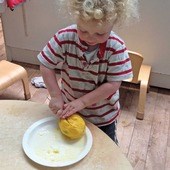 Eating seven or more portions of fruit and vegetables a day may help reduce a person's risk of death by up to 42 per cent, according to recent research by scientists at the University College London.
Eating seven or more portions of fruit and vegetables a day may help reduce a person's risk of death by up to 42 per cent, according to recent research by scientists at the University College London.
The study is the first to link fruit and vegetable consumption with all-cause, cancer and heart disease deaths in a nationally representative population, the first to quantify health benefits per portion, and the first to identify the types of fruit and vegetable with the most benefit.
The researchers used the Health Survey for England to study the eating habits of 65,226 people representative of the English population between 2001 and 2013.
The study found that eating seven to ten portions daily (when compared to less than one portion) appeared to reduce the risk of death by cancer and heart disease by 25 per cent and 31 per cent respectively. The study reports that compared to eating less than one portion of fruit and vegetables, the risk of death by any cause is reduced by:
- 14 per cent by eating one to three portions
- 29 per cent by eating three to five portions
- 36 per cent by eating five to seven portions, and
- 42 per cent by eating seven or more.
These figures are adjusted for sex, age, cigarette smoking, social class, Body Mass Index, education, physical activity and alcohol intake, and exclude deaths within a year of the food survey.
The research also showed that vegetables have significantly higher health benefits than fruit, with salad contributing to a 13 per cent risk reduction per portion, while each portion of fresh fruit was associated with a smaller but still significant 4 per cent reduction.
'We all know that eating fruit and vegetables is healthy, but the size of the effect is staggering,' says lead author of the study Dr Oyinlola Oyebode, of UCL's Department of Epidemiology & Public Health.
'The clear message here is that the more fruit and vegetables you eat, the less likely you are to die at any age.
'Vegetables have a larger effect than fruit, but fruit still makes a real difference. If you're happy to snack on carrots or other vegetables, then that is a great choice, but if you fancy something sweeter, a banana or any fruit will also do you good.'
The findings lend support to the Australian government's 'Go for 2 + 5' guidelines, which recommend eating two portions of fruit and five of vegetables.
'However,' says Dr Oyebode, 'people shouldn't feel daunted by a big target like seven. Whatever your starting point, it is always worth eating more fruit and vegetables.
'In our study, even those eating one to three portions had a significantly lower risk than those eating less than one.'
'ORANGE SOUP'
1 medium butternut squash
8-10 carrots
1 onion
2 sweet potatoes
3 cloves garlic
1/2 tsp chilli powder
1 tbsp vegetable oil
3 pints vegetable stock
Method
- Prepare all the vegetables. Peel and de-seed the squash and chop it roughly. Peel the carrots, onion and sweet potatoes and slice them.
- Heat the oil in a large saucepan and add the onion. Saute lightly for five minutes till softened and then add the squash, carrots and sweet potato.
- Cook on a low heat for about five minutes then add the garlic, vegetable stock and chilli powder. Simmer until the vegetables are all tender.
- Turn off the heat and let the soup cool slightly. Transfer to a blender and whizz it up until smooth.
- Serve the soup with warm, home-made bread rolls.
MORE INFORMATION
- Eat 5 by Helen Foster
- 'Fruit and vegetable consumption and non-communicable disease: time to update the '5 a day' message?' in the Journal of Epidemiology & Community Health
- 'Fruit and vegetable intake: five a day may not be enough, scientists say', www.theguardian.com/uk-news/2014/apr/01/ fruit-and-vegetables-seven-portions-ucl-study
- 'Perfect serving sizes', www.buildhealthykids.com/servingsizes.html.
June Graham is an early years practitioner at Cowgate Under 5's Centre, Edinburgh, www.cowgateunder5s.co.uk




